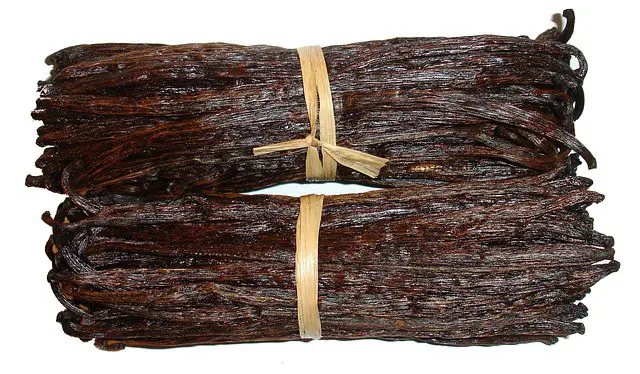Vanilla beans add a sweet, floral, and slightly woody flavor and aroma to foods and drinks. They can enhance the overall taste profile of a dish and provide a rich and complex flavor.
But what if you find that the vanilla beans you purchased have no flavor or smell? If you notice this problem, there could be several causes to investigate.
Here are a few possibilities when your vanilla beans have no flavor or smell:
- Your Smell and Taste: Is it possible you’re having trouble smelling and tasting the vanilla? Get a second opinion in case it’s an issue with you. Some health conditions cause people to temporarily lose the ability to smell and taste so check to make sure it isn’t something you’re experiencing.
- Poor Quality Beans: The quality of vanilla beans can vary widely, depending on where they were grown, how they were harvested, and how they were stored. If you purchased low-quality vanilla beans, they may not have much flavor or aroma.
- Improper Storage: Vanilla beans are sensitive to heat, light, and moisture. If they were not stored properly, their flavor and aroma may have deteriorated. Ideally, vanilla beans should be stored in an airtight container in a cool, dark place.
- Immature Beans: Vanilla beans must be harvested at the right time to develop their full flavor and aroma. If the beans were harvested too early, they may not have developed their characteristic vanilla flavor.
- Processing Issues: Vanilla beans must be processed correctly to develop their flavor and aroma. If the beans were not properly cured or dried, they may not have developed their full potential.
If you suspect that your vanilla beans are of poor quality or were not stored properly, you may want to consider purchasing a new batch from a reputable source and storing them correctly to ensure that they develop their full flavor and aroma.
How to purchase only the best quality vanilla beans
First off, choose a high volume retailer to purchase vanilla from where you know they have high turnover and frequent stock turn. That way, there’s a better chance you’re purchasing vanilla that is fresh and not stale from waiting to be sold.
Also look for the following:
Appearance: Look for vanilla beans that are plump, shiny, and moist. The beans should be flexible, but not brittle or dry. Avoid beans that are discolored, moldy, or have split or broken skin.
Aroma: Give the beans a sniff. They should have a strong, sweet, and floral aroma. If the beans have little to no aroma, they may be of low quality or past their prime. You can often eliminate bad beans just by sniffing them yourself.
Origin: High-quality vanilla beans typically come from Madagascar, Tahiti, or other tropical regions. Look for beans that are labeled with their country of origin, as this can be a sign of quality.
Grade: Vanilla beans are often sold in different grades, with Grade A beans being the highest quality. Look for Grade A beans if possible, as they will have the most flavor and aroma.
Price: Vanilla beans can be expensive, but be wary of beans that are significantly cheaper than others on the market. This may be a sign of lower quality or inferior processing.
By considering these factors when purchasing vanilla beans, you can help ensure that you’re getting a high-quality product that will add delicious flavor and aroma to your dishes.
How to prepare the vanilla bean for use
Preparing vanilla beans for use in food dishes is fairly simple. Here are the steps to follow to ensure it’s prepared properly:
- Split the bean lengthwise: Using a sharp knife, split the vanilla bean in half lengthwise, being careful not to cut all the way through the bean.
- Scrape out the seeds: Use the back of the knife to scrape out the tiny black seeds from the inside of the bean. These seeds are what give vanilla its flavor and aroma.
- Add the seeds to your dish: Once you have scraped out the seeds, you can add them directly to your dish. Vanilla beans are commonly used in custards, ice creams, and other desserts, but they can also be used in savory dishes like marinades and sauces.
- Use the leftover bean: Don’t throw away the leftover bean! You can add it to a jar of sugar to make vanilla sugar, or you can add it to a bottle of vodka or other spirit to make your own vanilla extract. The leftover bean can also be dried and added to potpourri or used to flavor coffee or tea.
Using vanilla beans in your cooking can add a rich, complex flavor and aroma to your dishes. Just be sure to store your leftover beans in an airtight container in a cool, dark place until you’re ready to use them again.

